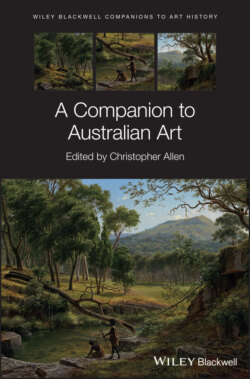Читать книгу A Companion to Australian Art - Группа авторов - Страница 33
The Debate on Modernism
ОглавлениеGiven generally modest acquisition budgets, the conservatism of governing boards (and even some directors) and, at least until the 1960s, an almost total absence of professional curators (with the exception of the NGV, which was, and remains, better funded by government for its operating expenses),17 the state galleries continued to acquire and exhibit quietly but methodically. Until well into the 1960s, incoming travelling exhibitions were few, the majority supplied by the British Council in London, consisting almost exclusively of contemporary British works, which would tour to various State galleries, and often to New Zealand.18
The one great exception to this rather conventional taste occurred in 1939, when Sir Keith Murdoch,19 already a member of the Council of the NGV and fed up with the conservatism of both his fellow Trustees and its director, J.S. MacDonald, commissioned the independent critic and scholar Basil Burdett to curate a serious exhibition of the French and British avant garde, from Cézanne, Van Gogh and Bonnard to Matisse, Picasso, Dali and Ernst, bringing the most radical French art to Australia for the first time. When the NGV refused to accommodate the exhibition, Murdoch hired the Melbourne Town Hall instead and, in a short season, attracted the largest crowds Melbourne had ever seen at a temporary, imported art exhibition.20
The debate on modern art in relation to public art gallery collections continued after WWII. Under the influence of Sir Keith Murdoch, director Sir Daryl Lindsay and especially the London Felton Bequest consultant A.J. McDonnell, the type and quality of modern acquisitions lifted noticeably. In many ways, artists’ practice in Sydney both immediately before and after WWII proved to be more advanced than in Melbourne, where a more conservative form of modernist tonal realism prevailed until WWII at least – and much the same can be said of the late 1950s and early 1960s, when Sydney artists and dealers opened themselves far more to global principles of abstraction than in Melbourne, where figuration, reflecting a local form of expressionist representation, often with emphatically Australian subjects, held sway.
It was in the 1960s, however, that Australian museology, particularly in terms of collections and exhibitions, changed profoundly. Once again, Melbourne led the field. Before his death in 1952, Sir Keith Murdoch had persuaded the government that a new, purpose-built NGV was required, and a site was selected just to the south of the city business center and River Yarra. Designed by Roy Grounds as a monolithic block faced in local dressed bluestone, it represented a type of public building unknown in Australia – luxurious and glamorous in its fittings and finishes, with ample spaces designed for entertaining and events, and with installation principles never experienced before.
Constructed through the 1960s with, for the first time, significant private sector financial support and under the watchful eye of its director Eric Westbrook, the new NGV opened to great acclaim in 1968, the first part of a group of cultural buildings for theatre and music performance constituting a new Arts Center. Reflecting new social, political and museological thinking about the place of Australia in its region, the first collections encountered on the ground floor were the Asian, not the European old and modern masters on which Melbourne prided itself, with the Australian and global contemporary collections installed on the level above. A new spirit was reflected in the fact that the opening exhibition, The Field, presented the work and ideas of a group of radical young Australian artists, who sought inspiration in New York rather than Paris or London, and produced Hard Edge, Color Field and Minimalist works which surprised and unsettled the public.
In the spirit of post-war regeneration and cultural revival, the new NGV stood as a beacon for the future Australian art museology.
Before long, other governments and institutions began to recognize the cultural, economic and status benefits which such a project could bring, and the 1970s saw major building projects, though all on a smaller scale, undertaken in Sydney, Brisbane and Perth. The Australian art world was waking up.
